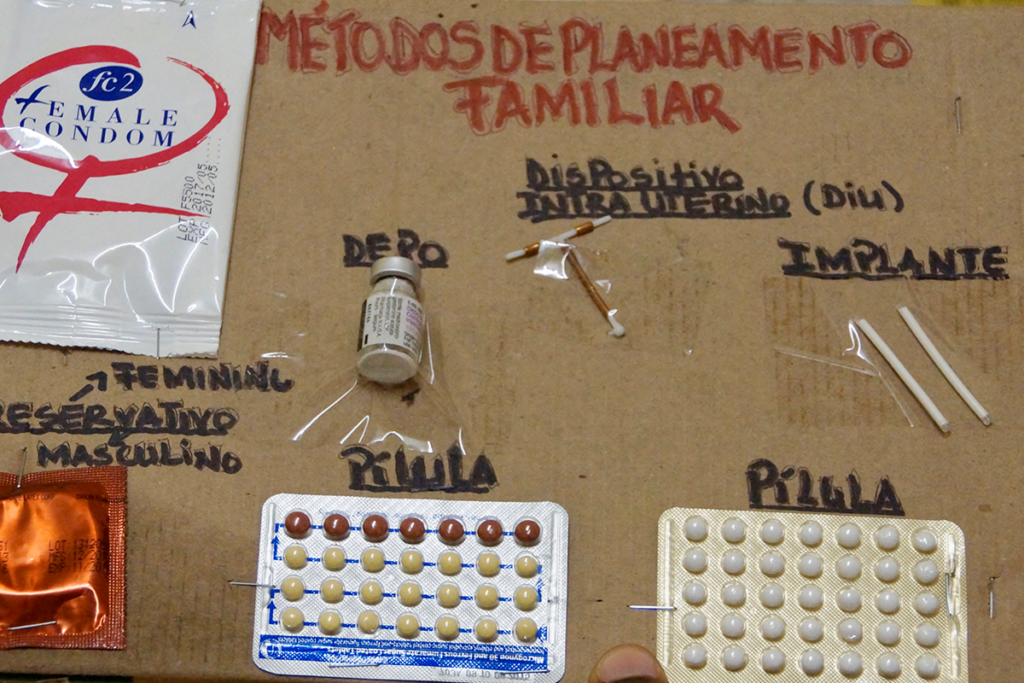This blog post is the first in a two-part series on contraceptive research. This post originally appeared on the Contraceptive Technology Innovation (CTI) Exchange.
Contraceptive product development efforts, to date, have largely been premised on the notion that if we build it, they will come. Primary attention has been paid to making products that work, with the assumption that if women want to avoid pregnancy, they will use them. While the desire to avoid pregnancy is an extremely powerful motivator, it is not enough. For many women, the fear of contraceptive side effects or the challenge associated with accessing and using contraceptives is greater than the burden of another pregnancy.
Some argue that to improve uptake and continuation rates, we need to improve provider counseling around contraceptive side effects and address socio-cultural barriers, such as inequitable gender norms, that prevent women from using contraceptives. These efforts – while essential – are still insufficient. Even the most informed and empowered women can have unintended pregnancies when they don’t have access to acceptable contraceptives – methods that meet their particular needs in their particular life stage and context.
Knowing what is potentially unacceptable to users is a great start, but it doesn’t tell us everything. We also need to know what users desire from their contraceptives. What characteristics could make them not only easier, but maybe even desirable to use? What non-contraceptive benefits might they confer? Soliciting this kind of information is not easy. Responses to hypothetical questions about whether one would use a new method are not especially reliable. The correlation between what people say they are going to do and what they actually do is notoriously weak.
Product preference questions are especially challenging within the time and space constraints of a quantitative survey. Questions usually have a set of pre-coded response options which inevitably do not encompass the entirety of perspectives; moreover, standardized product descriptions can limit understanding. Translation of complex or unfamiliar concepts into the local language of the study population also presents challenges. How does one describe “hormone” in Mossi, the predominant local language in Burkina Faso? Also, surveys can run the risk of social desirability bias where the respondent gives an answer she thinks the interviewer wants to hear or is the “right” answer.
But… by asking a lot of different questions in different ways, we can begin to see patterns. By using different data collection methods, we can triangulate our findings. As part of the Contraceptive Technology Innovation Initiative, we did just that in a recently completed study in Uganda and Burkina Faso. The study assessed potential user preferences for six, long-acting methods currently in various stages of development or introduction: a new single-rod implant, a biodegradable implant, a longer-acting injectable, a method of non-surgical permanent contraception, a new copper intrauterine device (IUD), and the levonorgestrel intra-uterine system (LNG-IUS).
To start, we added a set of 11 questions to one round of the Performance Monitoring and Accountability 2020 (PMA2020) survey in each country. Women were asked what method characteristics were most important to them when choosing a contraceptive, how long they wanted their method to last, and whether they would consider using any of these six methods, if available. The great thing about the PMA2020 platform is that it offers a nationally representative sample of women, so we can have some reassurance that findings are generalizable to the broader population.
To supplement the survey data, we held focus group discussions with women and men and conducted in-depth interviews with family planning providers. We explored user preferences, attitudes, and decision-making drivers related to the six methods specifically and to contraceptive use generally.
In all, more than 5,000 women responded to the PMA2020 survey questions and over 500 women, men, and providers participated in focus groups and interviews. We learned, for example, that women in Uganda and Burkina Faso are particularly concerned about irregular and heavy menstrual bleeding caused by some contraceptives. While some respondents said they would use a method that induces amenorrhea (absence of bleeding), others were concerned that stopping menstruation would have negative health effects.
Some women said they wouldn’t want a method inserted into the uterus, while providers noted that many of their clients would not use a method that delayed their ability to get pregnant after discontinuing use. Across several lines of inquiry, we found that the biggest complaints about existing methods were directly related to what makes many of them work – contraceptive steroids. We will need to identify new, non-hormonal contraceptive targets to increase chances of future product method acceptability.
In the end, our research confirmed the urgency for a broader range of family planning methods to meet widely varying needs and desires of women worldwide – a range that includes new choices with fewer side effects to enhance acceptability and reduce health-related fears that deter use. There is nothing hypothetical about that.
Photo caption: A display of available family planning methods used for counseling at Eduardo Mondlane Health Center in Chimoio, Mozambique.
Photo credit: © 2015 Arturo Sanabria, Courtesy of Photoshare




